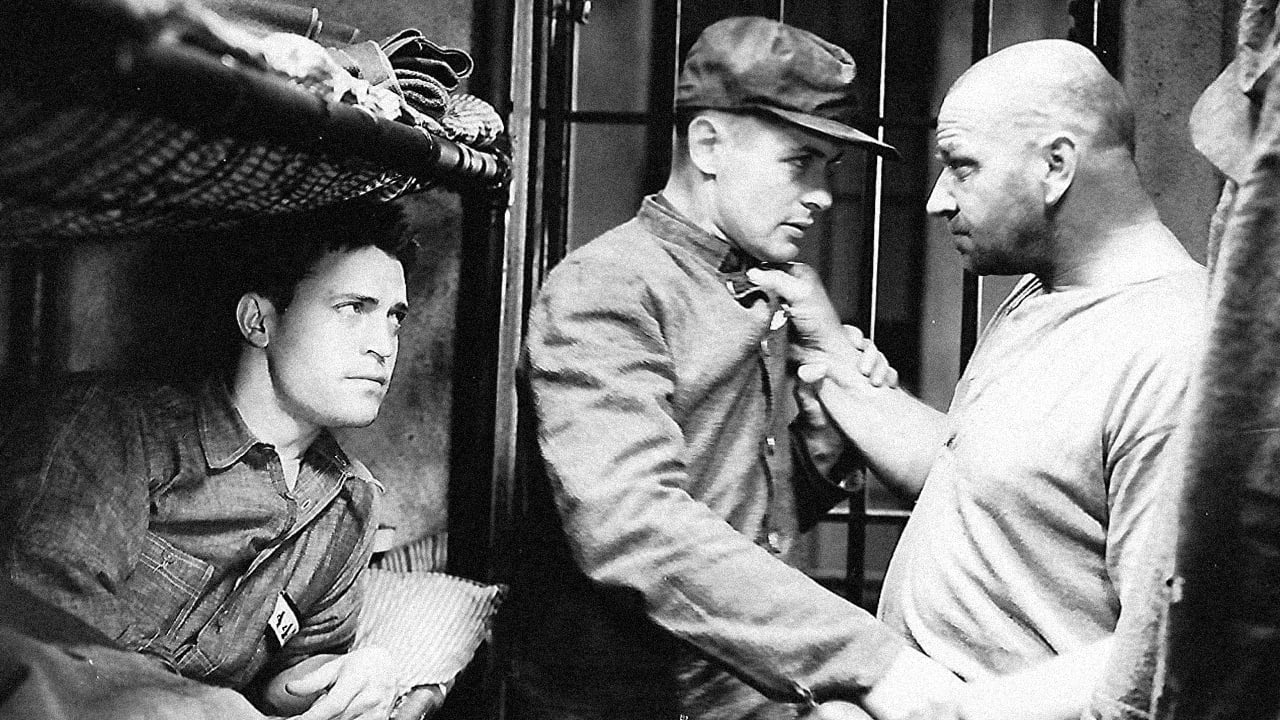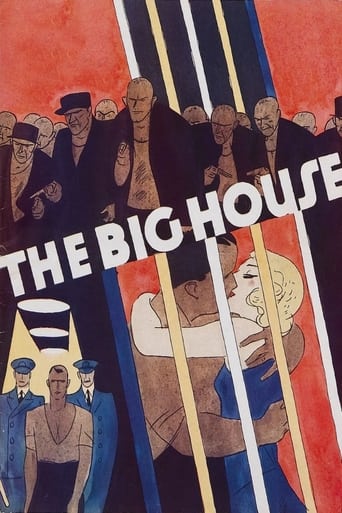

Executive producer: William Randolph Hearst. A Cosmopolitan picture, copyright 19 June 1930 by Metro-Goldwyn-Mayer Distributing Corp. Jute mill scenes filmed at the Pacific Woolen and Blanket Works, Long Beach. New York opening at the Astor, 24 June 1930. U.S. release: 21 June 1930. 10 reels. 7,901 feet. 87½ minutes.NOTES: The Academy of Motion Picture Arts and Sciences awarded Frances Marion a statuette for Best Screenplay (defeating a very strong line-up: All Quiet on the Western Front, Disraeli, The Divorcée and Street of Chance), whilst Douglas Shearer (only) received a similar accolade for Sound Recording. Also nominated for Best Picture (All Quiet on the Western Front was the winner), and Best Actor, Wallace Beery (losing to George Arliss' Disraeli).The movie made such an impact on professional reviewers, it scored Number 6 position on The Film Daily annual poll of critics. The German and French versions were both directed by Paul Fejos, the Spanish version by Ward Wing.COMMENT: An unremittingly grim prison drama, thanks to dialogue and characters that are extraordinarily realistic, abetted by the solid performances ace director George Hill elicited from his cast. The story is nothing if not fast-moving and, thanks to Hill's powerful staging, it comes over with a terrific punch. Unsung cinematographer Harold Wenstrom's atmospheric camera-work also rates as a major asset.In such a uniformly excellent group of players, it seems a bit unfair to single out a few of the actors for special praise, but we simply must commend Wallace Beery and Robert Montgomery. The former has a typical role, which he puts over with customary yet fascinating force. Montgomery, on the other hand, essays a most untypical part — a cowardly stool-pigeon — which he limns so persuasively and convincingly, he easily overtakes Beery as the most unsympathetic character in the picture."The Big House" stands unchallenged as one of the most powerful prison movies ever made. It hasn't dated one iota.After viewing a second time: Yes, in many ways ahead of its time. Hard to believe that the marvelously realistic sound track was recorded by Douglas Shearer, and that the predominantly gray-toned sets are the work of Cedric Gibbons. Despite the familiarity of its themes and background, The Big House remains a totally riveting experience today.And as for that astonishingly effective performance by Robert Montgomery — totally unsympathetic — all we can say about the rest of his career (with perhaps four or five notable exceptions): What a waste!Other players who deserve a special commendation include Chester Morris, in a made-to-order characterization (which he went on to repeat time and time again — with only a few exceptions — in his subsequent career), Leila Hyams and George F. Marion. As the prison governor, Lewis Stone is far removed from his cracker-barrel Judge Hardy sinecure, and (as in his many other pre- Andy Hardy movies — see The Notorious Lady for example) handles the powerful role most convincingly.Pleasingly, "The Big House" is currently on offer as a 10/10 POD commercial DVD release through the Warner Archive.
... View MorePrison pictures were still raw and exciting in 1930 and this was the grand daddy of them all!!! I disagree with the reviewer - I think this film is every bit as good as a Warner Bros. crime movie. Wallace Beery is a revelation as "Butch" - a character, that a few years down the track would become a staple in almost every prison movie.Kent Marlowe (Robert Montgomery) a wealthy youth, who is used to having his parents fight his battles for him, is sentenced to 10 years for manslaughter - he kills a man while driving drunk. Lewis Stone plays the stern warden, while George F. Marion plays his "conscience", Pop Ryker. There are several speeches against the antiquated prison system, the overcrowding, which leads to putting first timers into cells with hardened criminals. This is what happens to Kent - he is to share a cell with "Butch" (Wallace Beery) an unrepentant murderer - "you never heard of the Delancy gang wipe out - well, I done the wiping!!!" and also Morgan (Chester Morris) a criminal who still has humanity. He tries to give Kent advice about surviving in prison but Kent is drawn to the prison stoolie!!!There are some wonderful visual highlights - the prison food hall - prisoners are shown eating at what a few seconds before were empty tables. There is then a protest about the food, which "Butch" leads. Morgan is keeping a low profile as he is due to be released. During visiting time Morgan sees Ann, who is visiting her brother, Kent. Kent is of course whining and complaining about how he can't take things in here anymore and why can't she do something about it. He is cowardly - Robert Montgomery is just excellent and has perfected the wild eyed stare - and through his actions, ruins Morgan's chance of getting an early release. Both Morgan and "Butch" are put in solitary confinement and when they are released Morgan makes a daring escape via the prison morgue.While out he visits Anne's bookstore but she suspects who he is as her brother has written her a letter. She bravely apprehends him with his own gun until he manages to convince her that he means no harm. A local detective thinks he recognizes him and after a few months of freedom (he makes a new start, falls in love with Anne) he is taken back to prison.There is to be a prison breakout (shades of "20,000,000 Years in Sing Sing" (1933)). "Butch" has it timed for noon but Kent has already squealed to the Warden and the guards are waiting for them and because Morgan has refused to join the mob, "Butch" thinks he is the one who leaked the plans. The mob scenes are excellently handled and the siege is very exciting. They even bring in the tanks!!!Although I haven't seen Robert Montgomery in a lot of films, I don't think I have ever seen him act in a more convincing way. Leila Hyams was also an actress who tackled some pretty unusual roles as well. After a few ordinary roles she was surprisingly cast as the circus girl in "Freaks" - but this role was different as well. She plays Anne Marlowe, a compassionate girl, who is not afraid to use a gun to defend herself and also runs her own business.Highly Recommended.
... View More042: The Big House (1930) - released 6/14/1930; viewed 3/26/06.Chicago Tribune journalist Alfred Liddle is shot in Chicago, apparently due to mafia ties.BIRTHS: Clint Eastwood.DOUG: It's good to see our Wallace Beery fitting so well into a sound film, with his gruff, raspy voice going well with his intimidating physique. Although the story is told from Morgan's and Kent's points of view, it's Butch who steals the show (Beery was nominated for Lead Actor, after all). The movie starts off from Kent's point of view, as he is incarcerated for a DUI and vehicular manslaughter. After he's there for a while, the film then shifts to Morgan's point of view, as Kent betrays him (on the day of Morgan's parole no less) in hopes of getting some time off (such is the Prisoner's Dilemma). Morgan escapes, and hooks up with Kent's sister on the outside (it used to be his wife, but audiences were turned off by this turn of events). At first we're on Kent's side, but as he starts to cave, our sympathy shifts to Morgan in a most interesting way. The climax is a thrilling gun battle in the prison, and in the end, one of our heroes dies and the other goes free. Overall, a very good genre picture.KEVIN: More fun from Frances Marion (the most celebrated woman screenwriter in Hollywood history), who here tackles a much grittier subject: the prison movie. This film is really a three-man ensemble, consisting of Morgan (Chester Morris), Kent (Robert Montgomery), and Butch (big bad Wallace Beery). When the film starts, I thought it would be all about Kent, trying to keep his head on straight while serving his manslaughter sentence. The focus begins to shift when he reaches his cell and meets 'Machine Gun' Butch and the charismatic brains to his brawn, John Morgan. Very quickly the story shifts to Morgan after Kent double-crosses him and Morgan later escapes. But Butch can hardly be regarded as the third-place character, as his mere presence virtually dwarfs the other two men. It's definitely not the greatest prison picture that could be made. The directing is average, the action scenes are spectacularly implausible, and the sound effects are notably sloppy, but it's certainly an enjoyable character-driven action yarn, guided by Marion's expert pen.Last film: Hell's Angels (1930). Next film viewed: Animal Crackers (1930). Next film chronologically: Monte Carlo (1930)
... View MoreSo many high quality prison melodramas have been on the screen in the last few decades that this one--made in 1930--has to be reviewed in the context of its time. As such, it's a well-written, powerful study of men behind bars, none of whom observes a code of conduct likely to make them good material for rehabilitation.CHESTER MORRIS is a forger, WALLACE BEERY is a thick-necked bullying murderer and ROBERT MONTGOMERY is a comparative "innocent" with a drunken manslaughter charge against him. They share the same cell and are soon involved in bickering and double-crosses that make up most of the plot contrivances that lead to a prison break where all hell breaks loose. Within the conventions of crime melodramas, this one maintains passable interest today although it lacks the taut tension of more modern prison dramas.Filmed when sound in film was only two years old, there is virtually no background music at all--a factor which dates the film's style and gives it a static quality during moments where music would have raised the drama to a higher pitch.CHESTER MORRIS, an interesting actor, is likable and energetic as the man who walks out of prison a free man after helping to contain the riot. ROBERT MONTGOMERY does a fine job as the coward who breaks under the stress of having betrayed another prisoner and LEWIS STONE does a good turn as the warden.Overall, it's better than average for this sort of thing--well paced despite the lack of background music to emphasize the drama--and worth watching for the performances. Beery is especially good and deserved his Best Actor nomination. Chester Morris is equally impressive in the top-billed assignment, forceful and convincing all the way in a showy role.But I have to conclude that Warner Bros. seemed to have a better handle than MGM on this sort of tough, stark material. Raoul Walsh's WHITE HEAT ('49)with James Cagney is the best example.
... View More